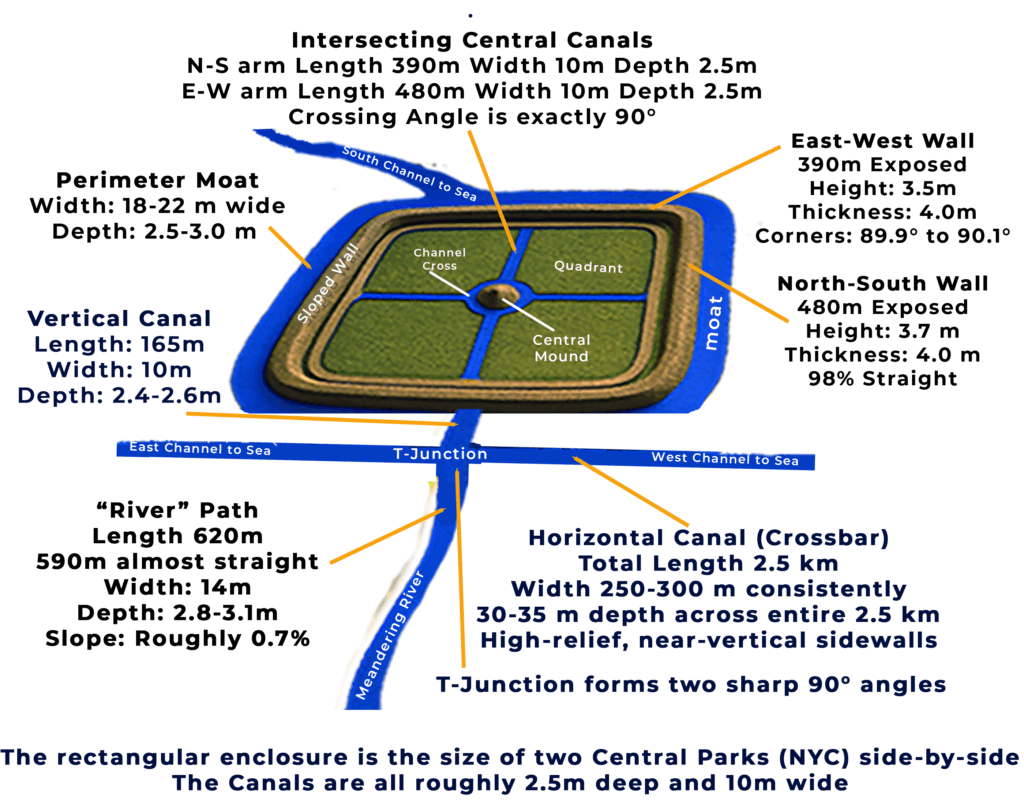Explorer Robert Sarmast will present AI-enhanced underwater maps showing what he describes as a highly geometric structure half a kilometre beneath the sea on the Latakia Ridge between Cyprus and Syria at a University of Cyprus event on 26 November.
The presentation marks Sarmast’s return to Cyprus nearly 20 years after two deep-sea expeditions in 2004 and 2006 that drew global attention to the Latakia Ridge as a possible site of ancient settlement.
The Latakia Ridge Research Institute (LRRI), founded by Sarmast in 2025, applied an AI anomaly-detection model to regional bathymetric data from the Eastern Mediterranean with the instruction to “find what doesn’t fit the background geology”, according to the press release.
The system identified a location on the Latakia Ridge summit showing a flat rectangular basin with sharply defined edges, perimeter embankments forming a trench-like enclosure, a southern canal-like cut at right angles to the internal slope, an elevated river-like channel crossing the basin, and two roughly triangular mounds mirrored across a straight canal, according to LRRI.
Multiple independent datasets confirmed the patterns were not mapping errors, the institute said.
“We are not announcing the discovery of a lost city,” Sarmast said in the press release. “We are announcing a very specific, highly geometric anomaly that we can’t yet explain—and we are inviting the scientific community to help us test it.”
LRRI describes the question of whether the structures represent an engineered landscape on a submerged peninsula as one of the most intriguing open scientific questions about early civilisation in the Eastern Mediterranean.
The newly identified site lies several kilometres beyond the area targeted during the earlier expeditions, in a zone those missions could not fully resolve with the technology then available, according to LRRI.
The visit coincides with the release of Sarmast’s book “The Sunken Peninsula: An Astonishing Underwater City at the Latakia Ridge”, which synthesises three decades of geological and geophysical analysis. The book argues that if the Latakia Ridge structures are confirmed as engineered, they would support conclusions advanced by several Russian geophysicists in the mid-20th century that parts of the north-eastern Mediterranean may have stood above sea level more recently than mainstream Western chronologies assume.
Sarmast’s trip will initiate early planning for a new scientific expedition to be launched from Cyprus. The proposed mission would obtain physical verification through core sampling of sediments on the Latakia Ridge summit, high-resolution multibeam sonar surveys and sub-bottom profiling, and visual ROV/AUV imaging of the rectangular basin and associated structures, according to LRRI.
Sarmast will also hold private briefings with scientific and regional representatives from Cyprus, Syria and Russia during the visit.
The free public event takes place at the University of Cyprus Amphitheatre LRC 012 from 6pm to 8pm on 26 November, with doors opening at 5.30pm.
The presentation will be in English with summaries available in Greek, Russian and Arabic.


